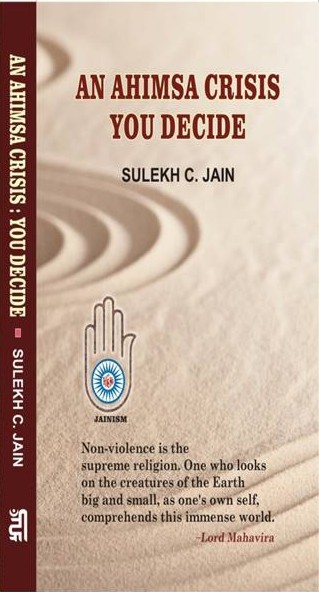This topic has had many debates, is very sensitive, touchy and some people will not take lightly and even abuse me for what I am going to say below. In fact, some friends have warned me and advised me not to touch this topic. Still and to all of them, I say my michchhami dukhadam for causing any hurt.
Digambra Jain munis have no possessions except a kamandlu (made of a particular wood and shaped like a jug, for storing water - not for drinking but only for cleaning after going to the toilet). In addition, a Jain muni will also have a small broom (called a pichcchi) used just for lightly sweeping the area where the Jain muni is going to sit (to make sure that no insects will be hurt or crushed). The pichchhi is made of peacock feathers. The feathers should be shed naturally by the peacocks, then collected and finally used for making pichchhi. As we can see, this is a product of complete non-violence. As times have changed, several factors have come into play:
- The number of Jain munis has grown and hence the need for more pichchhis.
- Due to deforestation, urbanization, and hunting, the number of peacocks and hence the availability of naturally shed feathers has gone down significantly.
- Because they are used not only for pichchhis but also for many other tourist, commercial and home furnishing items, the production of peacock feathers via peacock factory farming has become a major organized industry.
- A new tradition has recently developed within the Jain community. This is to exchange the pichcchi (pichcchi parivartan samroh) annually with very elaborate ceremonies and functions, thus creating the need for more pichchhis every year.
- To meet the demand for peacock feathers, just like factory farming for milk, eggs, honey, silk, and wool, peacock feather factory farming has begun.
- When we procure pichchhis, how do we and hwo many of us in all honesty and reality make sure that the peacock feathers are natural shed and without any cruelty to the peacock?
All of this has led to the torture of peacocks where they are captured forcibly and very cruelly stripped of their feathers to the extent that some succumb and the poor birds die. Because of this, pichchhi definitely has footprints of himsa and this cannot be denied. If any one doubts, I urge the Jains to personally go and see how the peacock feathers are procured and picchhis are made. There is nothing like seeing with one’s own eyes.
Should we not take a pause and reflect on what and how much himsa we are perpetuating and inflicting by this tradition? Is this necessary and are there alternatives and other possible materials? I think this tradition needs a serious and very urgent look and I hope it happens soon. One feedback: As an environmentalist and forest officer during my tenure at Jaipur I was entrusted to check and certify that the peacock feathers for export are naturally shed and not pulled out forcibly which is very common. Peacocks shed feathers not all at one time but they do it one or more at a time during a certain period. As such all feathers if looking alike in appearance, fresh and shining are certainly those pulled out forcibly. There is also some dirty mark at the tip to ascertain that it has been pulled out and not shed naturally and thus those lots were rejected and penalty imposed. I do not see any reason why only peacock feathers alone should be used by Digambar saints whereas Shwetamber saints are using cotton ones. S.M. Jain, 7-B, Talwandi, Commerce College Main Road, Kota-24005, Rajasthan.
Now you decide: is this behavior consistent with ahimsa?
 Dr. Sulekh Chand Jain
Dr. Sulekh Chand Jain
